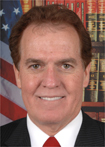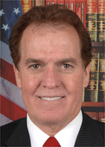Journal Sentinel Backs Walker's Reform Effort – Fighting Union Monopoly Power Not For The Squeamish!
Subscribe to The National Right to Work Committee® by Email Click Gov. Walker's image to send him a meesage. A major newspaper in Wisconsin is backing Gov. Scott Walker's efforts to reform the runaway power of government workers unions: Restoring Wisconsin to fiscal health is not for the squeamish. The medicine is going to be bitter. Gov. Scott Walker's proposals to strip state employee unions of much of their bargaining power illustrates just how bitter. But Walker is right to do this. He must insist that state workers pay a bigger share of their benefits. And he's right to take steps to compel them to do so. The governor is overreaching in some respects. And even if he wins the bruising fight to come in the state Capitol, he risks alienating broad swaths of independent voters. But Walker must fill a gaping budget hole of $137 million for the fiscal year that ends June 30 and a much larger imbalance in the next two-year budget. Something has to give. Walker's proposals affect virtually every unionized public worker in the state, at both the state and municipal levels. But the alternative to trimming benefits is laying off thousands of workers. The state, not to mention the economy, is better served by keeping as many of its workers on board as possible, albeit at a lower cost. Walker estimates his proposals will save the state $30 million between now and June 30 and $300 million over the course of the next two-year budget. That doesn't count savings at the local level, which should help make up for expected cuts in state aid. Our analysis:






